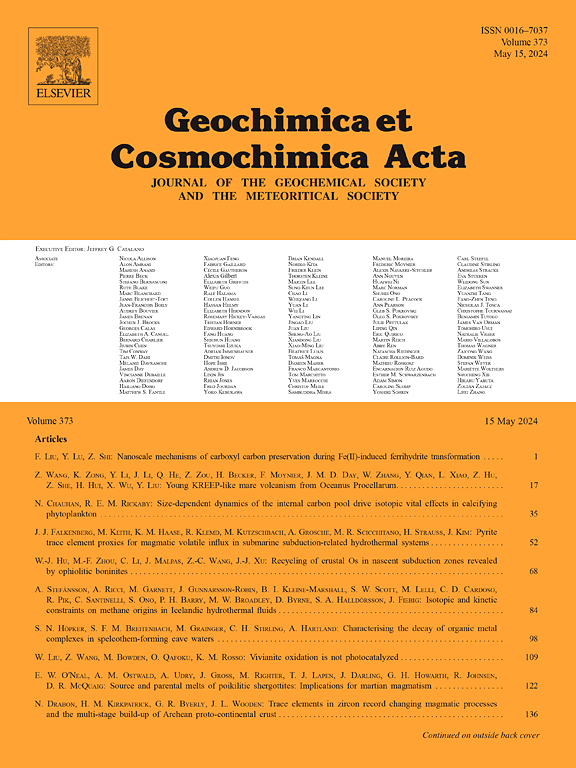Influence of the Amazon River on the composition of particulate organic carbon in the western tropical Atlantic Ocean
IF 4.5
1区 地球科学
Q1 GEOCHEMISTRY & GEOPHYSICS
引用次数: 0
Abstract
The Amazon River exports ∼13.7 Tg yr−1 of particulate organic carbon (POC) to the ocean, a portion of which is transported vertically through the water column. Here, we investigated in detail the composition of POC using a multi-tracer approach, including POC concentration, stable carbon isotopes (δ13C) and a wide range of molecular biomarkers to assess the contribution of POC export from the Amazon River to the western tropical Atlantic Ocean (WTAO). For this purpose, suspended and sediment trap POC were collected at multiple depths along the Amazon River plume under high and low river discharge conditions. Concentrations of POC detected in the plume were ∼2 to 3-fold higher than those below the plume. Overall, δ13C signatures of suspended and sediment trap POC samples were enriched, averaging −19.9 ‰ and –22.8 ‰, respectively. At the surface, POC composition was mainly characterized by low molecular weight n-alkanoic acids (<C20), mono- and disaccharides (e.g., glucose, scyllo-inositol and melibiose) and triglyceride derivatives (e.g., glycerol and 2-O-glycerol-α-D-galactopyranoside), indicating fresh inputs of organic matter (OM) presumably derived from algal blooms. These biomarkers were observed in lower concentrations in sediment traps. Trap samples were marked by zooplankton- (e.g., cholesterol, occelasterol) and bacteria-derived (e.g., C15 and C17 branched n-alkanoic acids) biomarkers, indicating metabolic alteration of OM at those depths. Solvent-extractable terrestrial biomarkers (e.g., dehydroabietic acid and levoglucosan) were only found in minor concentrations in most samples, which contrasts with the dissolved fraction which has been previously shown to have a primary signature of terrigenous inputs. Our results clarify the Amazon River plume’s impact on the biological pump of the WTAO, consistent with a river plume fueling primary production, and with increased zooplankton and bacteria contributions to POC composition at depth and in the POC that is vertically exported.
求助全文
约1分钟内获得全文
求助全文
来源期刊

Geochimica et Cosmochimica Acta
地学-地球化学与地球物理
CiteScore
9.60
自引率
14.00%
发文量
437
审稿时长
6 months
期刊介绍:
Geochimica et Cosmochimica Acta publishes research papers in a wide range of subjects in terrestrial geochemistry, meteoritics, and planetary geochemistry. The scope of the journal includes:
1). Physical chemistry of gases, aqueous solutions, glasses, and crystalline solids
2). Igneous and metamorphic petrology
3). Chemical processes in the atmosphere, hydrosphere, biosphere, and lithosphere of the Earth
4). Organic geochemistry
5). Isotope geochemistry
6). Meteoritics and meteorite impacts
7). Lunar science; and
8). Planetary geochemistry.
 求助内容:
求助内容: 应助结果提醒方式:
应助结果提醒方式:


